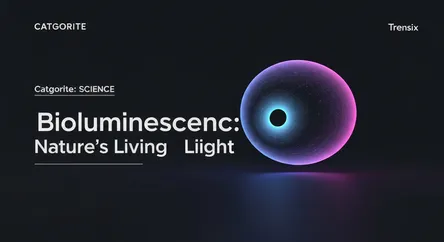Science
Bioluminescence: Nature's Living Light

Explore bioluminescence, the incredible ability of living organisms to produce their own light. Discover the science and wonder behind nature's glow.
What is it?
Bioluminescence is the production and emission of light by a living organism. It's a natural phenomenon that occurs when a chemical reaction converts chemical energy into light energy. This 'cold light' reaction typically involves a light-emitting pigment called luciferin and an enzyme, luciferase. When luciferin reacts with oxygen, catalyzed by luciferase, it creates an unstable, excited molecule that releases its excess energy as a photon of light. This process is seen in a vast array of life forms, from fireflies and fungi on land to countless creatures in the deep sea, including jellyfish, squid, and anglerfish, who use it for communication, camouflage, and predation.
Why is it trending?
Interest in bioluminescence is surging due to advances in deep-sea exploration technology, which continually reveals new and fascinating glowing species. Furthermore, its applications in biotechnology and medical research are expanding rapidly. Scientists are harnessing the genes responsible for bioluminescence to create 'reporter' systems that can visually track cellular processes, the spread of diseases like cancer, or the effectiveness of new drugs in real-time. This visual power makes complex biological studies more accessible and intuitive, driving innovation across scientific fields.
How does it affect people?
Bioluminescence directly impacts scientific and medical progress. Its use in laboratories provides a powerful, non-invasive tool for research, accelerating discoveries in genetics, oncology, and neurology. Beyond the lab, the principles of bioluminescence inspire new technologies, such as developing self-powered, sustainable lighting or creating new methods for detecting environmental pollutants. The sheer beauty of phenomena like glowing ocean waves (caused by dinoflagellates) also boosts eco-tourism and fosters a greater public appreciation for the marine environment and the incredible biodiversity of our planet.